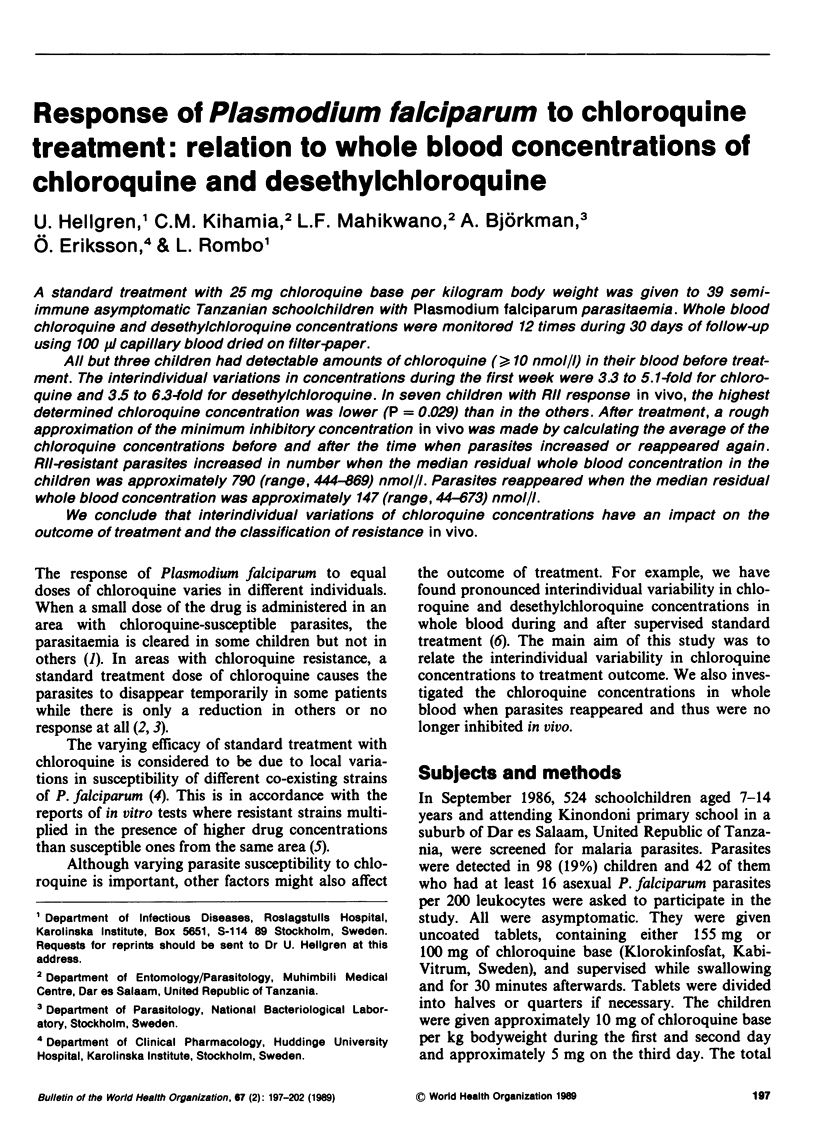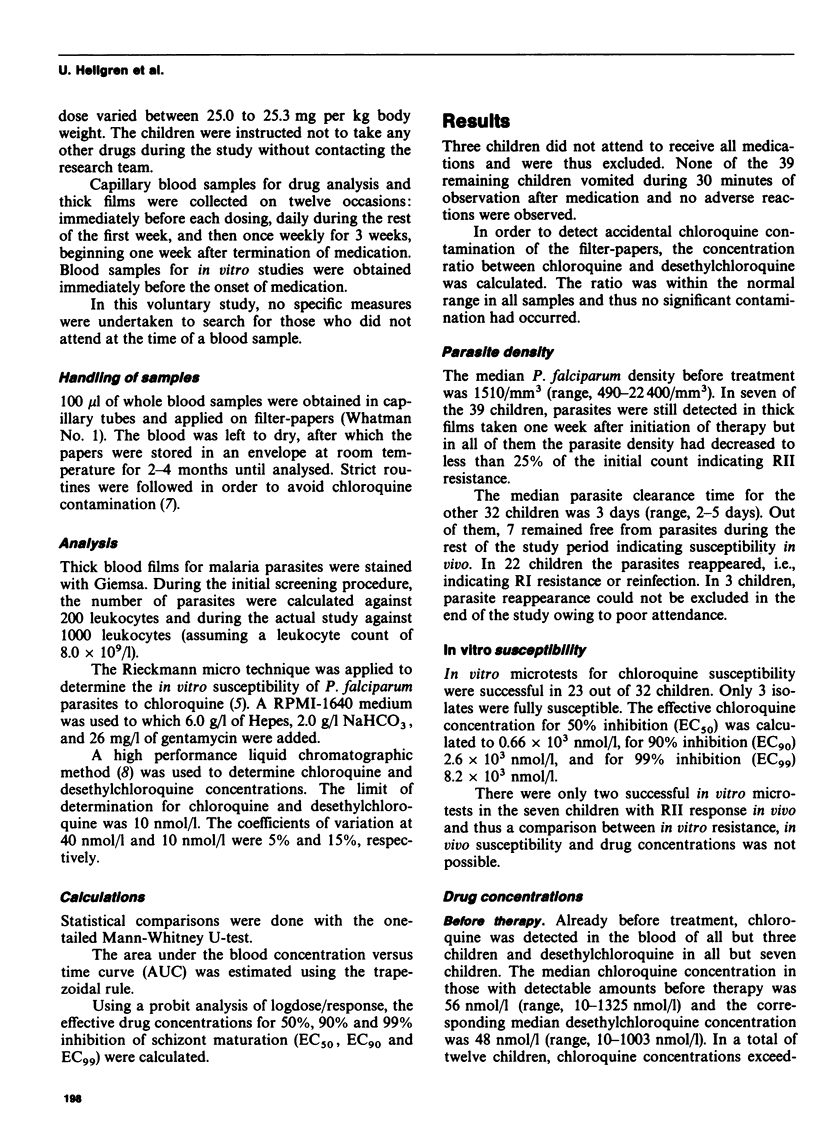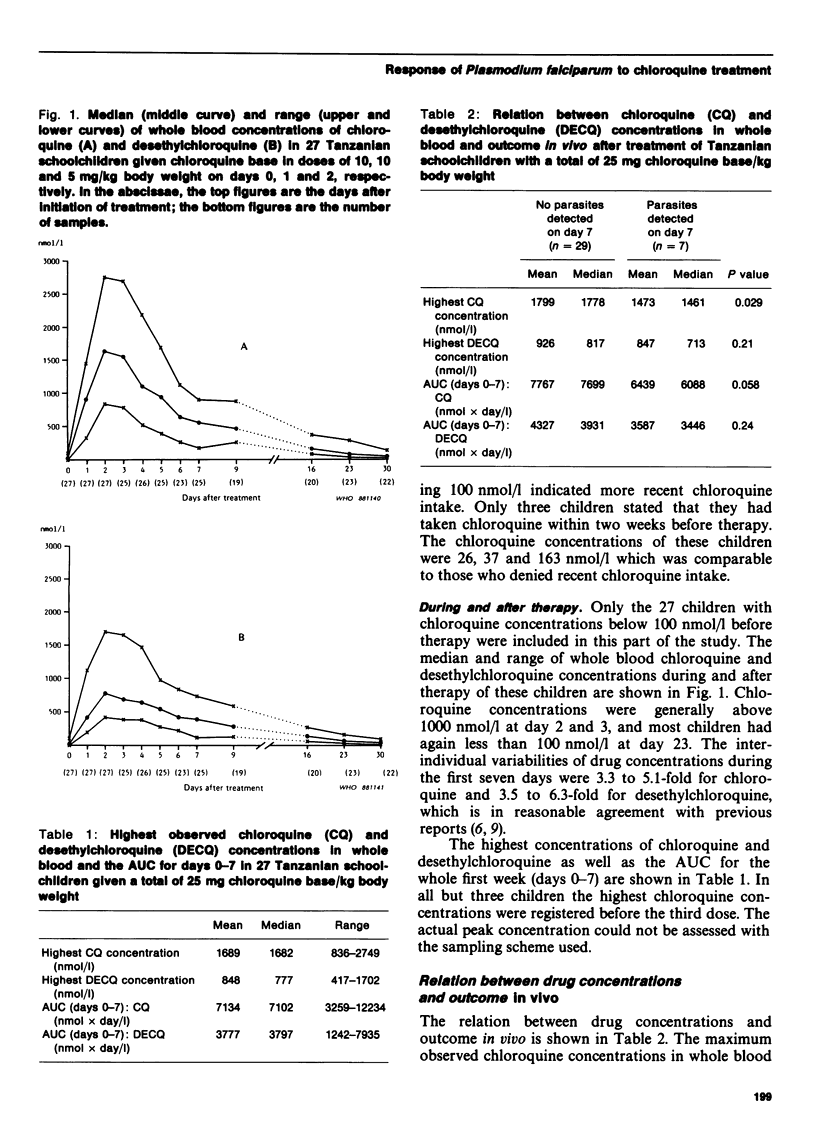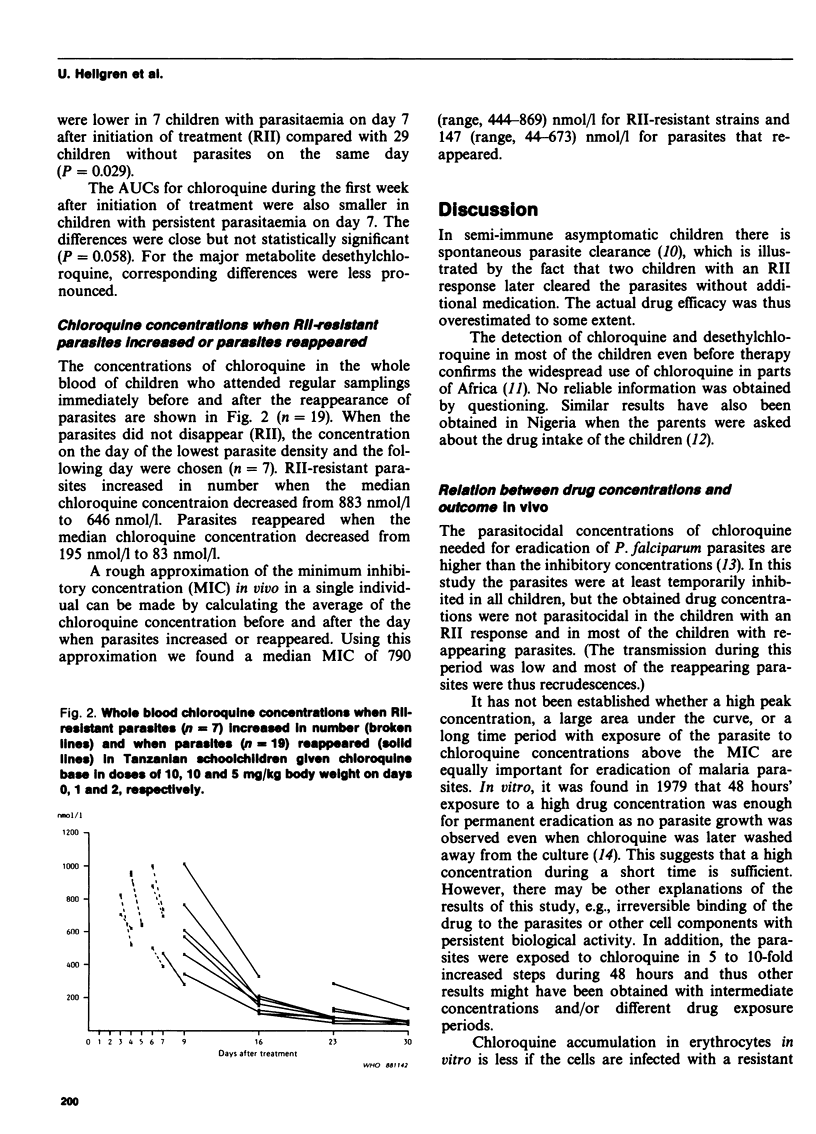Abstract
A standard treatment with 25 mg chloroquine base per kilogram body weight was given to 39 semi-immune asymptomatic Tanzanian schoolchildren with Plasmodium falciparum parasitaemia. Whole blood chloroquine and desethylchloroquine concentrations were monitored 12 times during 30 days of follow-up using 100 microliters capillary blood dried on filter-paper. All but three children had detectable amounts of chloroquine (greater than or equal to 10 nmol/l) in their blood before treatment. The interindividual variations in concentrations during the first week were 3.3 to 5.1-fold for chloroquine and 3.5 to 6.3-fold for desethylchloroquine. In seven children with RII response in vivo, the highest determined chloroquine concentration was lower (P = 0.029) than in the others. After treatment, a rough approximation of the minimum inhibitory concentration in vivo was made by calculating the average of the chloroquine concentrations before and after the time when parasites increased or reappeared again. RII-resistant parasites increased in number when the median residual whole blood concentration in the children was approximately 790 (range, 444-869) nmol/l. Parasites reappeared when the median residual whole blood concentrations was approximately 147 (range, 44-673) nmol/l. We conclude that interindividual variations of chloroquine concentrations have an impact on the outcome of treatment and the classification of resistance in vivo.
Full text
PDF





Selected References
These references are in PubMed. This may not be the complete list of references from this article.
- Aderounmu A. F., Fleckenstein L. Pharmacokinetics of chloroquine diphosphate in the dog. J Pharmacol Exp Ther. 1983 Sep;226(3):633–639. [PubMed] [Google Scholar]
- Richards W. H., Maples B. K. Studies on Plasmodium falciparum in continuous cultivation. I. The effect of chloroquine and pyrimethamine on parasite growth and viability. Ann Trop Med Parasitol. 1979 Apr;73(2):99–108. [PubMed] [Google Scholar]
- Rombo L., Bergqvist Y., Hellgren U. Chloroquine and desethylchloroquine concentrations during regular long-term malaria prophylaxis. Bull World Health Organ. 1987;65(6):879–883. [PMC free article] [PubMed] [Google Scholar]
- Rombo L., Kihamia C. M., Mahikwano L. F., Ericsson O., Sjöqvist F. Concentrations of chloroquine and desethylchloroquine in capillary blood dried on filter paper during and after treatment of Tanzanian children infected with Plasmodium falciparum. Trop Med Parasitol. 1986 Sep;37(3):237–240. [PubMed] [Google Scholar]


